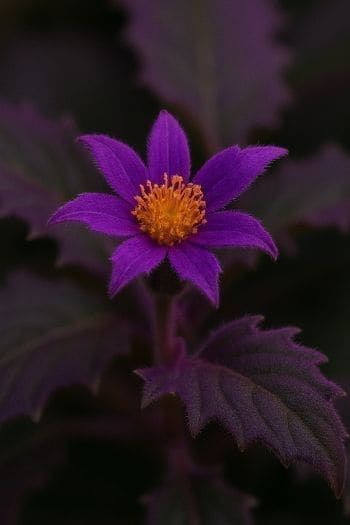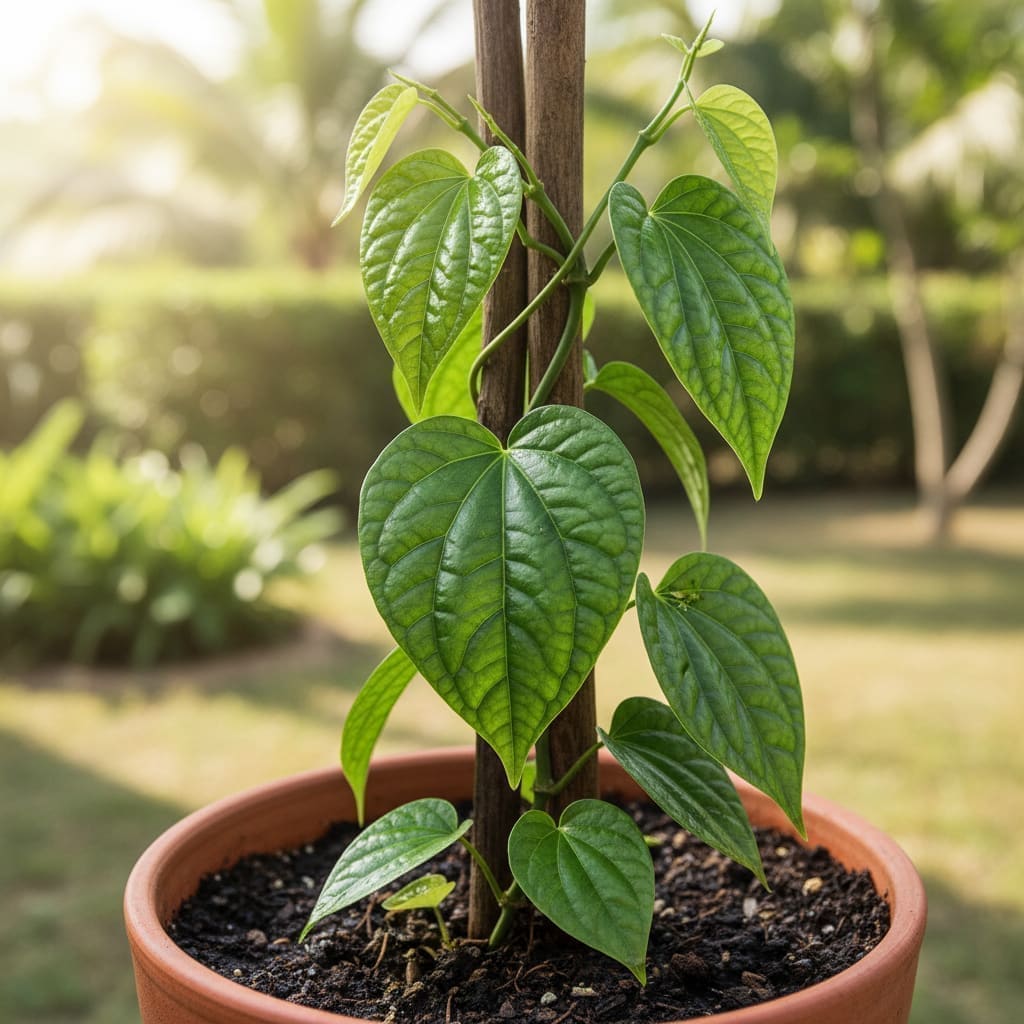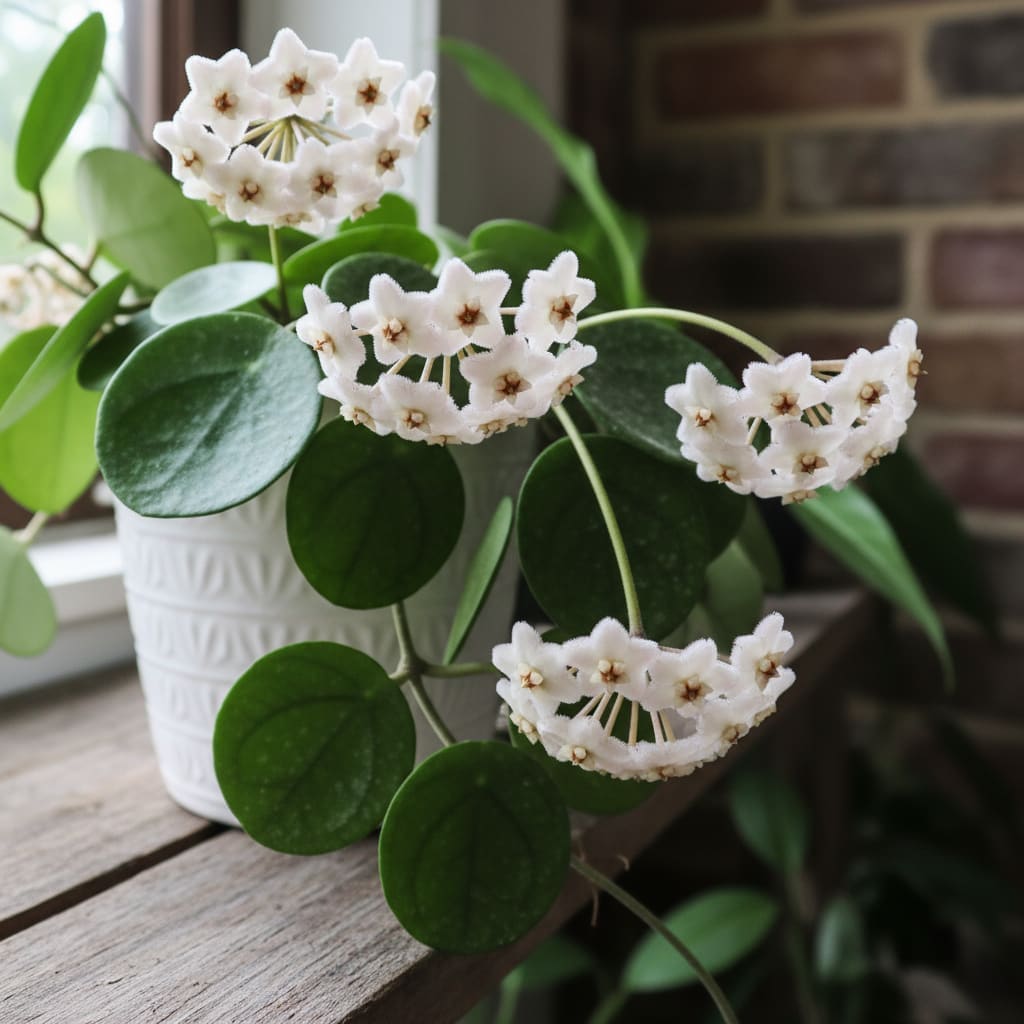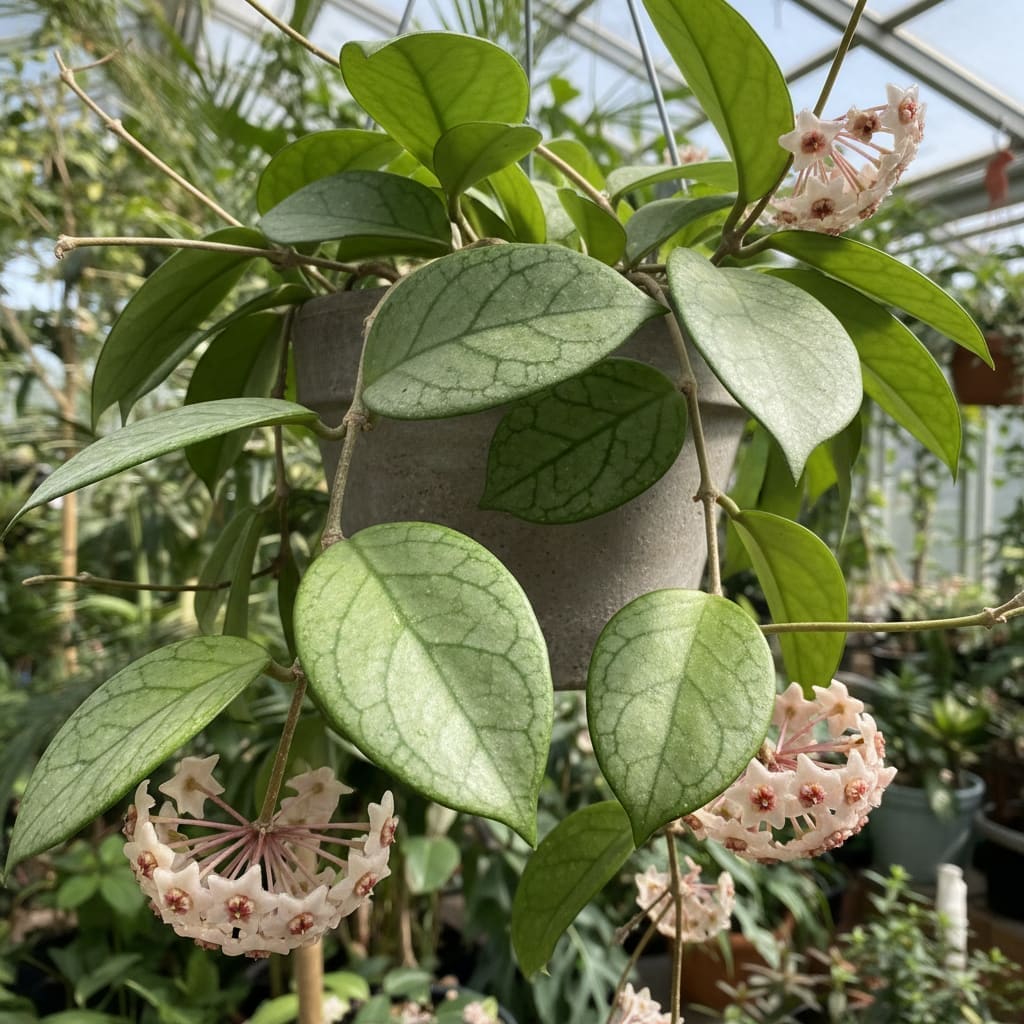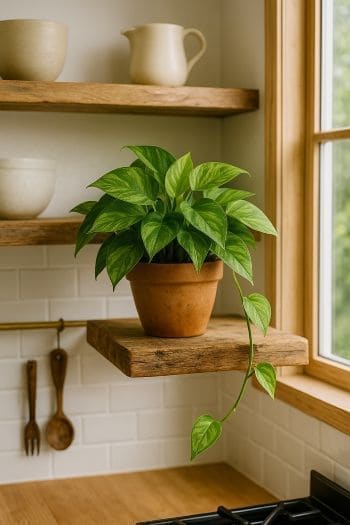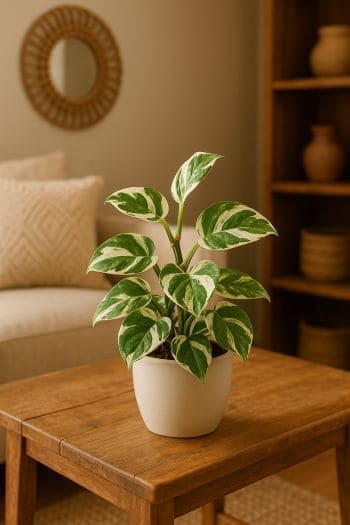Gynura aurantiaca (Purple Passion Plant) Care & Growing Guide
Overview
Gynura aurantiaca, commonly known as the Purple Passion Plant, is a striking tropical houseplant prized for its velvety, deep purple foliage. Native to Southeast Asia, it is grown primarily for its ornamental leaves rather than its flowers, which are bright orange but often considered less appealing due to their scent. This plant’s vivid coloration and trailing or climbing habit make it a popular choice for hanging baskets, shelves, or trained up supports indoors.
In its native habitat, the plant benefits from warm, humid conditions and filtered sunlight beneath taller vegetation. When grown indoors, replicating these conditions will help maintain its vibrant leaf color and healthy growth.
Identification & Growth Habit
Purple Passion Plant is easily recognized by its green leaves densely covered in fine purple hairs, giving them a velvety texture and iridescent sheen. The stems are also tinged purple. It has a semi-trailing to climbing growth habit, with stems that can cascade over the edge of containers or be trained upward on a trellis or moss pole. Mature plants can reach 1–2 feet (30–60 cm) in height and spread, depending on support and pruning.
Leaves are ovate with serrated edges, typically 2–4 inches (5–10 cm) long. The plant’s vivid coloration is most intense in bright, indirect light.
Light & Placement
- Provide bright, indirect light to maintain the purple coloration.
- Avoid prolonged direct sunlight, which can scorch leaves and fade color.
- East- or north-facing windows are ideal; in south- or west-facing windows, use sheer curtains to diffuse light.
- Rotate the plant every few weeks for even growth and coloration.
Watering & Humidity
Water when the top inch (2.5 cm) of soil feels dry to the touch. Use lukewarm water and ensure the pot has drainage holes to prevent waterlogging. Overwatering can lead to root rot, so always check soil moisture before watering again.
Humidity: Prefers moderate to high humidity. If indoor air is dry, especially in winter, increase humidity by:
- Misting the plant lightly (avoid soaking leaves).
- Placing the pot on a pebble tray with water.
- Using a room humidifier nearby.
Soil & Repotting
Use a well-draining potting mix enriched with perlite or coarse sand to prevent water retention. A standard indoor potting mix amended with 20–30% perlite works well.
Repot every 1–2 years in spring if the plant becomes root-bound or the soil has degraded. Choose a pot only slightly larger than the current one to avoid excess soil moisture retention.
Fertilizing
Feed with a balanced, water-soluble fertilizer (e.g., 10-10-10) every 4–6 weeks during the active growing season (spring and summer). Dilute to half the recommended strength to avoid fertilizer burn. Reduce or stop feeding in fall and winter when growth slows.
Pruning & Training
Regular pruning encourages bushier growth and prevents legginess. Pinch back stem tips to promote branching. Remove any yellowing or damaged leaves promptly.
For a climbing display, train stems onto a trellis or moss pole, gently securing them with soft ties. For a cascading look, allow stems to trail from a hanging basket or elevated shelf.
Propagation
Purple Passion Plant propagates readily from stem cuttings. Here’s a step-by-step guide:
- Using clean scissors or pruners, cut a healthy stem 4–6 inches (10–15 cm) long, just below a leaf node.
- Remove the lower leaves, leaving at least two leaves at the top.
- Place the cutting in a glass of water or directly into moist, well-draining potting mix.
- If rooting in water, change the water every few days to keep it fresh.
- Roots should develop in 1–3 weeks. Once roots are 1–2 inches (2.5–5 cm) long, transplant water-rooted cuttings into soil.
- Keep the new plant in bright, indirect light and maintain even moisture until established.
Common Problems
Pests
- Aphids: Small green or black insects on new growth. Remove with a strong stream of water or treat with insecticidal soap.
- Spider mites: Fine webbing and speckled leaves. Increase humidity and use miticide or neem oil.
- Mealybugs: White cottony masses in leaf axils. Dab with cotton swabs dipped in alcohol or apply insecticidal soap.
Diseases
- Root rot: Caused by overwatering and poor drainage. Remove affected roots and repot in fresh, well-draining soil.
- Leaf spot: Brown or black spots on leaves; avoid overhead watering and improve air circulation.
Toxicity & Pet Safety
Gynura aurantiaca is toxic if ingested by pets or humans. Keep it out of reach of cats, dogs, and small children. Symptoms in pets may include gastrointestinal upset. Seek veterinary advice if ingestion is suspected.
Styling & Decor Tips
- Display in hanging baskets to showcase its trailing stems.
- Use contrasting pots (white, light gray, or terracotta) to make the purple foliage pop.
- Combine with green-leaved plants for a striking color contrast in mixed arrangements.
- Train up a small trellis for a vertical accent on desks or shelves.
Varieties & Cultivars
While Gynura aurantiaca is the most common species grown indoors, there are related species and hybrids with similar purple foliage. Some cultivars may have slightly different leaf shapes or deeper coloration, but they share the same care requirements.
Buying Tips & Maturity
When purchasing, look for plants with vivid purple coloration, firm stems, and no signs of pests. Younger plants are often fuller and more compact; older plants may become leggy without regular pruning. With proper care, plants can live several years, though many growers refresh them from cuttings after 2–3 years to maintain vigor and appearance.
Seasonal Care
- Spring/Summer: Active growth period; increase feeding, maintain consistent watering, and prune regularly.
- Fall/Winter: Growth slows; reduce watering frequency and stop fertilizing. Protect from cold drafts and maintain adequate light indoors.
FAQ
- How do I keep my Purple Passion Plant’s leaves vibrant?
Provide bright, indirect light and avoid direct sun. Adequate light is key to maintaining the purple hue. - Can I grow Gynura aurantiaca outdoors?
In warm, frost-free climates, it can be grown outdoors in partial shade. In temperate zones, it should be kept as a houseplant or brought indoors before temperatures drop below 60°F (15°C). - Why are my plant’s stems becoming leggy?
Legginess usually results from insufficient light or lack of pruning. Move the plant to a brighter location and pinch back stems to encourage bushiness. - Should I remove the flowers?
Many growers remove the orange flowers to conserve the plant’s energy for foliage growth and because the blooms have an unpleasant odor. - How often should I repot?
Repot every 1–2 years in spring, or when roots fill the pot and growth slows.
Fun fact: The velvety purple hairs on Gynura aurantiaca’s leaves help protect it from intense sunlight in its native Southeast Asian habitat.
Source: Wikipedia
